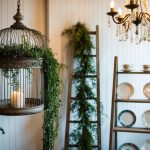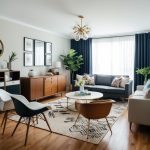Handmade Table Runners: Crafting a Personal Touch
Selecting Colors and Textures
Colors and textures play an essential role in creating a custom table runner. The selection process often begins with considering the existing decor and personal style preferences. Neutral tones may provide elegance and adaptability, while vibrant colors inject energy and personality into a dining space.
Texture adds depth, so choosing materials like cotton, silk, or linen influences the runner’s tactile appeal and visual interest. Combining different textures, such as a smooth silk background with a rough lace overlay, can create a captivating contrast. Patterns can also enhance texture, with options like stripes or florals providing additional layers of style.
Handmade Techniques
Creating handmade table runners offers a unique way to add style and personal flair to any dining setting. These techniques focus on using sewing and no-sew methods, each offering distinct tools, materials, and processes to achieve beautiful results.
Sewing Methods
Sewing techniques for handmade table runners involve traditional and modern approaches. One of the most popular is the use of straightforward straight stitching with a sewing machine, which provides clean lines and a professional finish.
He or she may also explore decorative stitches, such as zigzag or embroidered patterns, adding intricate designs to fabric. Choosing the right fabric is essential, from lightweight cotton to more sophisticated linen or silk, depending on the desired look and usage.
Piping or fringe embellishments can be applied for an upscale finish. Attention to detail in measuring and marking fabric ensures precision, while techniques like hemming protect against fraying. A well-crafted sewing method leads to a durable and elegant table runner that can complement any table setting.
No-Sew Techniques
No-sew techniques offer an alternative, faster option for creating table runners without a needle or thread. Fabric glue is often utilized to secure edges and attach embellishments, allowing for swift assembly. Heat bonding tape is another favorite; it transforms raw fabric edges into neat hems when ironed, ensuring quality without the need for stitching.
He or she can express creativity through fabric painting or using fabric markers to personalize the table runner, making each design unique. Another option includes using double-sided tape to quickly attach trims or lace for decorative touches. These methods provide a practical solution for those looking to make stylish table runners simply and efficiently.
Sizing Your Table Runner
Choosing the ideal size for a table runner involves considering the table’s dimensions and desired appearance. There are common measurements for standard tables and ways to customize to fit unique settings or styles.
Standard Dimensions
Table runners typically complement standard table sizes and shapes. For rectangular tables, common lengths range from 72 to 108 inches. This allows for a drape of 6 to 12 inches on each end, depending on preference. Widths vary but often fall between 14 and 17 inches to cover a substantial portion of the table surface without overwhelming it.
For round tables, a standard runner should cross the center, hanging over the edges. A length similar to that used for rectangular tables is effective. Oval tables may also utilize similar sizing, adjusted as needed to ensure a balanced drape.
When selecting a standard size, it’s important to account for table extensions. If the table is frequently expanded for larger gatherings, choosing a longer runner ensures consistent appearance regardless of the table’s configuration.
Custom Sizes
Custom-sizing a table runner can elevate its integration into unique spaces. Begin by measuring the full length and width of the table. Add desired overhang on each side, typically 6-12 inches, to determine the precise dimensions needed.
Consider custom widths to fit narrower or wider tables. For example, a wider runner may be desired to highlight intricate designs on larger tables. Conversely, a narrower runner can accentuate the table’s material and finish on smaller tables.
Customization extends to round or uniquely shaped tables. Speak with artisans or use self-measurements to ensure the runner harmonizes with specific features or design elements of the table, creating a personalized and cohesive aesthetic.



